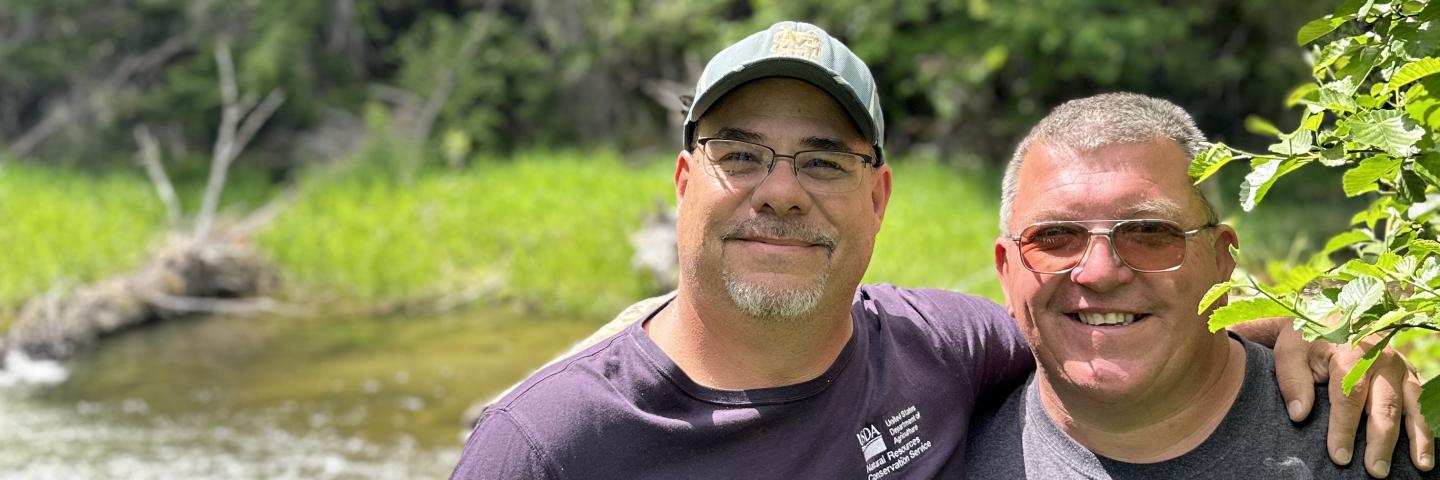Erosion Reduction Success in Plummer

Learn more about how NRCS works to benefit communities like Plummer, Idaho through relationships.
By: Carly Hamilton, USDA NRCS Idaho
Since 2013, Robert “Wheat” Kruger has been working diligently to improve the streambank of the Middle and South Fork of the St. Maries River, thanks to his friendship with Keith Swallows and the Natural Resources Conservation Service (NRCS).
Wheat’s start with NRCS came from a chance meeting with Swallows, a native of St. Maries, Idaho, and a soil conservation technician in the Plummer USDA field office. “I saw Mr. Kruger & the Stout family out in the fields moving cattle around, so I stopped and helped them get some of the cattle into a corral” explained Swallows. Helping with the cattle led to explaining what NRCS is and the programs available. A short time later, their work together began.
Wheat is the caretaker of the Stout family’s cattle in the summer, which they bring up from their land in Lewiston in June each year. Approximately 400 cattle arrive each year. However, access to water is limited to the stream. Due to the cattle traffic each season, the streambank was becoming so degraded that hundreds of pounds of sediment were flowing downstream each season. Wheat saw an opportunity with NRCS, and worked with Swallows to take it.
To combat the streambank erosion, Wheat and Swallows decided to install logs, rootwads, black cottonwood, aspen and, willow trees, and four- wire wildlife friendly exclusion fencing. The logs, trees and rootwads help reduce soil erosion from the streambank during high water flows, while the exclusion fence prevents cattle from accessing all but a small area of the stream. To "harden” the smaller access point, Wheat installed a heavy use area protection system, a form of protection for the streambank that will be traversed by cattle. It was very important to make sure the project still allowed the cattle to have clean drinking water and could access all pasture ground.
Initially, this project received some pushback from the community, many of whom believed that restoring the streambank would ruin the fishing. The St. Maries River is traditionally home to hundreds of cutthroat trout, a highly sought-after species for anglers in Idaho. The project placed rootwads and logs to prevent erosion and create more in stream habitat. It created more pools and increased the overall population of trout. “When we first started the project fishermen were upset that we were going to ruin the fishing in the watershed. Fast forward a couple years and those same fishermen tell us that they cannot ever remember so many cutthroat trout being in the watershed,” Swallows said.
According to Swallows’ calculations, this project has prevented more than 6,000 tons of sediment from being washed downstream, protecting both water quality and protecting habitat for important native species like cutthroat trout.
Despite initial skepticism, Wheat’s work on the Stout property is serving as an example to the landowners in Northern Idaho of how working with NRCS can improve a streambank. Each year, more landowners inquire about how they can reinforce and protect their own streambank, and each year more and more people are getting conservation on the ground.
To learn more about how you can help protect streambanks on your property or to find your local service center, visit nrcs.usda.gov/idaho.

